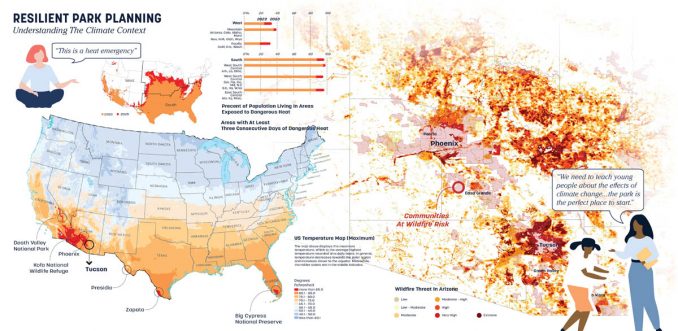
The master plan for Gene C. Reid Park (Reid Park) in Tucson, completed by Sasaki in November 2022, has moved into its first phase. Informed by a year-long, bilingual public engagement process, the plan will weave heat and flood mitigation strategies throughout the park’s beloved community gathering spaces, adding new resilient infrastructure and recreational attractions, including a new interactive water feature.
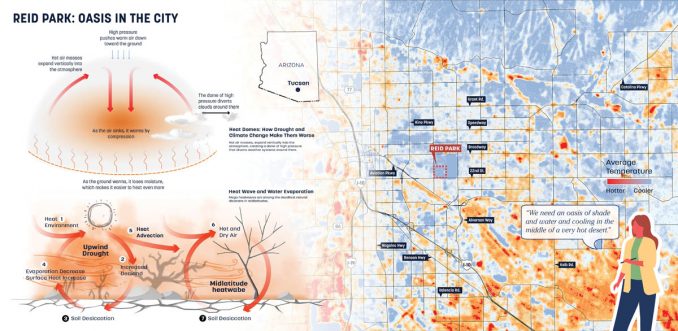
The project kicked off after Tucson’s November 2018 election, when voters approved Proposition 407 dedicating $225 million to citywide parks improvements and public realm connections. The Parks and Recreation Department decided to go beyond standard improvements to envision a lively and sustainable future for the beloved 131-acre Reid Park. Its existing ponds, tall shade trees, and dozens of shade structures generate an “oasis effect” which, in regional heat models, shows the park as a cool refuge surrounded by hot city blocks and desert beyond. With its new funding, Tucson set out to protect and strengthen this oasis, and transform it into a cornerstone of the city’s flood and drought resilience strategy.
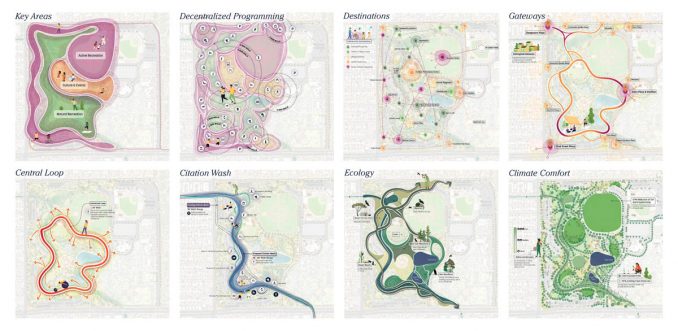
A robust community outreach program stitched this vision together through nine public events, 24 stakeholder meetings, and three online surveys receiving a total of 6,307 responses. All engagement was facilitated in both English and Spanish. These interactions were then filtered and analyzed using demographic markers of income, age, and ethnic and racial background to ensure an equitable interpretation of the survey results.
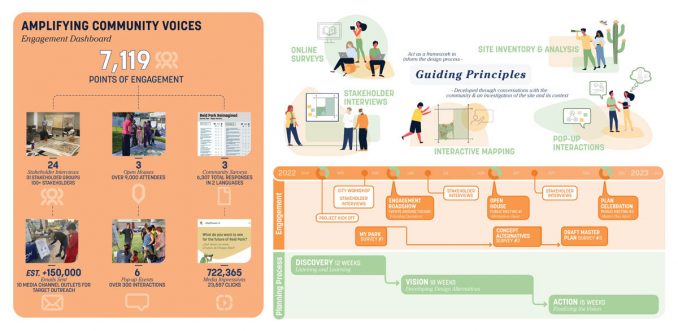
Across all demographics, one throughline was clear: a desire for the park to serve as a place of connection to the natural landscape. Residents wanted to maintain the park’s cherished performance venues, playgrounds, and sports fields, but hoped to see those cultural and recreational programs woven into an expanded fabric of native tree canopies, vegetation, and wildlife.
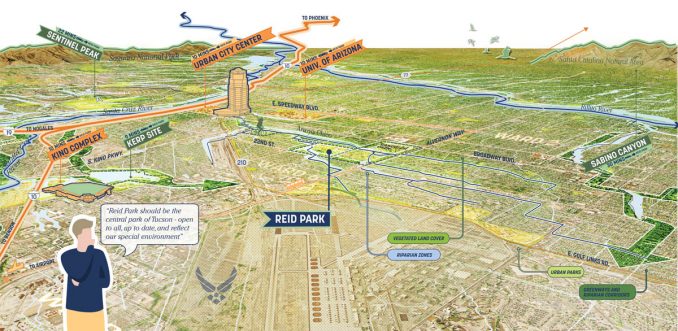
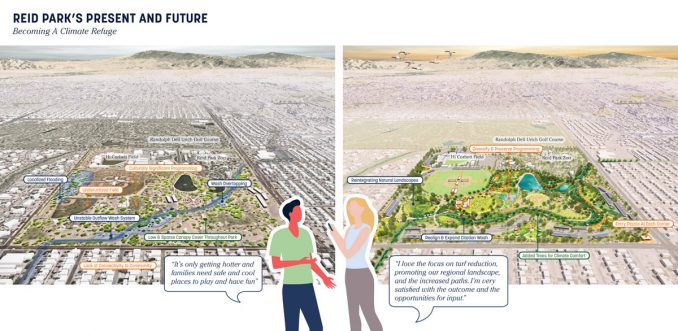
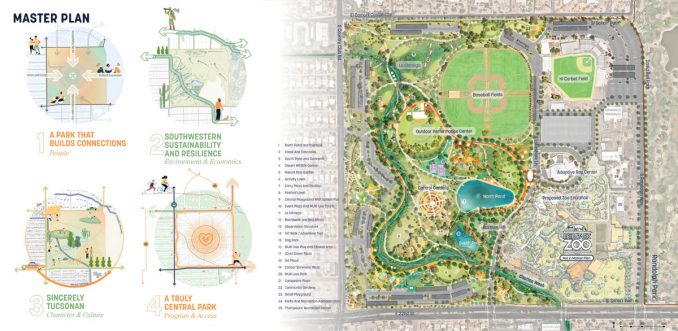
This desire for a more natural landscape directly reinforced the strategic goal of bolstering the park’s resilience. In many parts of the Southwest, climate change has intensified a pattern of scorching drought punctuated by unprecedented flooding. Reid Park’s Citation Wash is a perennial waterway. Its simple channel structure and turf ground cover offer minimal water quality or retention benefits. Large impervious areas produce run-off that damages soil and overwhelms drainage infrastructure. Most of the park’s shade is provided by just three exotic tree species: eucalyptus, Aleppo pine and African sumac, all of which have high water demands and increased vulnerability to heat stress, drought and pests.
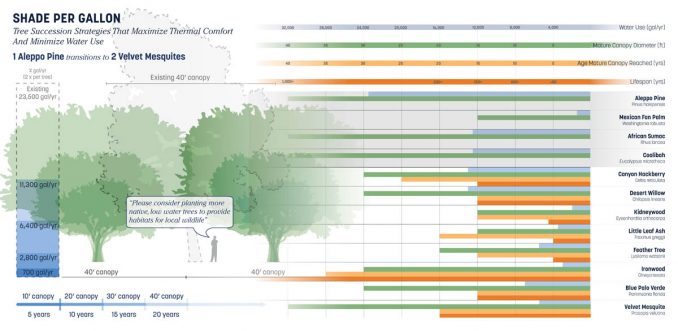
To address these challenges, Sasaki’s plan takes inspiration from the Sonoran Desert ecosystem’s own adaptive strategies. As in all desert biomes, the key to achieving this balance is orchestrating where the water goes. In Reid Park, that starts with Citation Wash. Currently, the wash is an artificially engineered gully that zig-zags through the park, only distinguishable on drier days as a shallow depression in the park’s grassy topography. The master plan reimagines this as a meandering riverbed which will slow floodwaters and let them safely spill over into vegetated areas. One such area is La Ciénega, a seasonal riparian wetland inspired by the vanishing vernal pools present in the Sonoran Desert. La Ciénega is designed to flood and addresses current issues of regular inundation during the monsoon season, absorbing overflow from adjacent expanses of hardscape, and nourishing a rich habitat for regional wildlife.
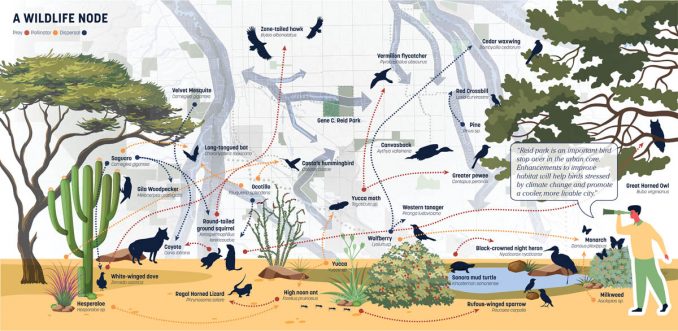
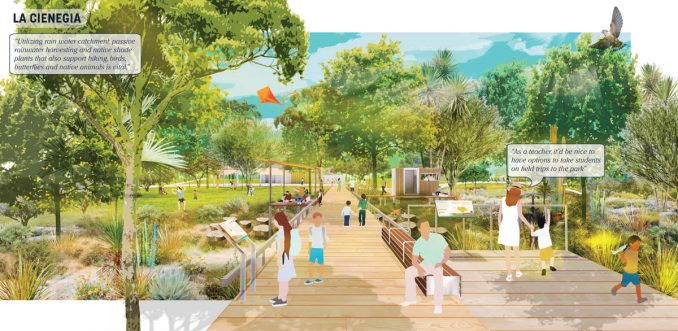
By concentrating Reid Park’s plant life along these naturally irrigated water courses, and by reducing the percentage of turf cover, the proposed plan frees up water for strategically placed groves of trees and vegetation around major walking trails and gathering spaces around the park. Expanded canopies in these areas will create cooler microclimates for fitness and recreation features, such as a new splash pad and playground. Groves of trees around the park’s ramadas, performance lawn, and central cultural spaces serve as a natural screen from the urban rhythms of surrounding neighborhoods.
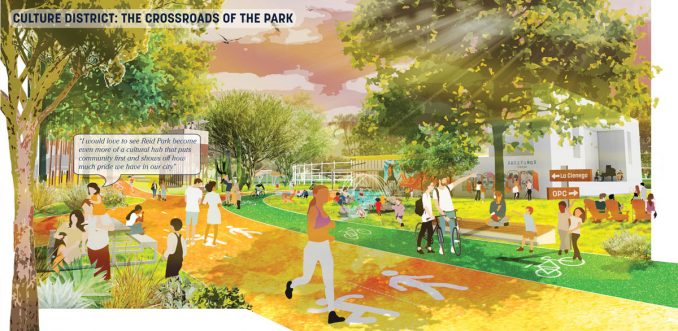
These improvements aim to revitalize the beloved community hub, and secure a resilient future for Reid Park and its surrounding neighborhoods. With the plan’s recent approval, phase one of Reimagining Reid Park, which will be an interactive water feature, shade structure and new park amenities such as restrooms, is set to break ground later this year.
Image and Text Credits: Sasaki
